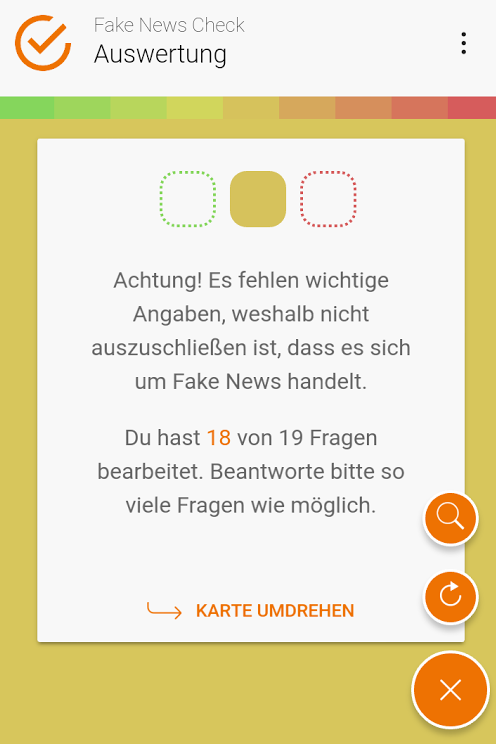"Stop Fake News!" - New teaching materials and app on the topic
Although fake news is not a new phenomenon; at the latest since the arrival of a large number of refugees in Germany in the summer of 2015 and the presidential elections in the USA last fall, buzzwords such as "fake news", "alternative facts" and "social bots" have been on everyone's lips. And they are spreading at breakneck speed via the Internet and social media. What this is all about, how to recognize "fake news" and how to counter such manipulation attempts is the subject of two new teaching units that were developed on behalf of the Lower Saxony Ministry of Education and Culture and are now available to Lower Saxony teachers for use in the classroom.
"To ensure that fake news and social bots do not become a danger to our democracy, our students must learn to deal with media in a reflective manner. They must be able to find their way through the abundance of information, distinguish the important from the unimportant, and serious from dubious sources. They must understand how news is made and how it is disseminated. The best way to combat misinformation and attempts at manipulation is therefore to provide good education and information and to strengthen our students' media skills. With the new teaching units, we want to provide our teachers with materials to address this important topic with their students in the classroom."
The two teaching units "Fake News and Social Bots in the Digital Age" were developed on behalf of the Lower Saxony Ministry of Education and Cultural Affairs by the Lower Saxony State Institute for Quality Development in Schools (NLQ), the JFF - Institute for Media Education and the FWU Institute for Film and Image in Science and Education gGmbH for use in lower and upper secondary schools. The aim is to use practical examples to introduce students to source criticism and make them fit to evaluate and analyze texts, images and videos on the Internet and social media. Teachers receive a variety of impulses for lesson planning and an extensive range of materials such as worksheets, sample texts and lists of links.
The portal "Stop Fake News!" on the Lower Saxony Education Server offers further comprehensive information and practical materials on the topic. In addition to the above-mentioned teaching units, there are, for example, materials on the "Varoufake" case involving the former Greek finance minister Varoufakis and on the pictorial staging of the Charlie Hebdo funeral march in Paris at the beginning of 2015. An explanatory video clearly and compactly explains what fake news is and how it can be recognized. Anyone who wants to test specific texts for their "fake news potential" can do so with the specially developed app "Fake News Check". The app - a kind of "fake news traffic light"" - is available for download free of charge from the Apple App Store and Google Play. Based on 19 questions, it helps classify a news item as serious information or fake news. The app can also be used in the classroom. For this case, teaching suggestions and work materials are available on the Stop Fake News portal.
Interested parties can obtain the complete range of materials on the topic of "Fake News" free of charge via the following link: www.stop-fake-news.nibis.de.
More on the topic
- Press release of the Ministry of Education of Lower Saxony : Stop Fake News!: Minister of Education Heiligenstadt presents new teaching materials on the topic of fake news (23.05.2017)
- klicksafe.de: Information and material on Fake News.

